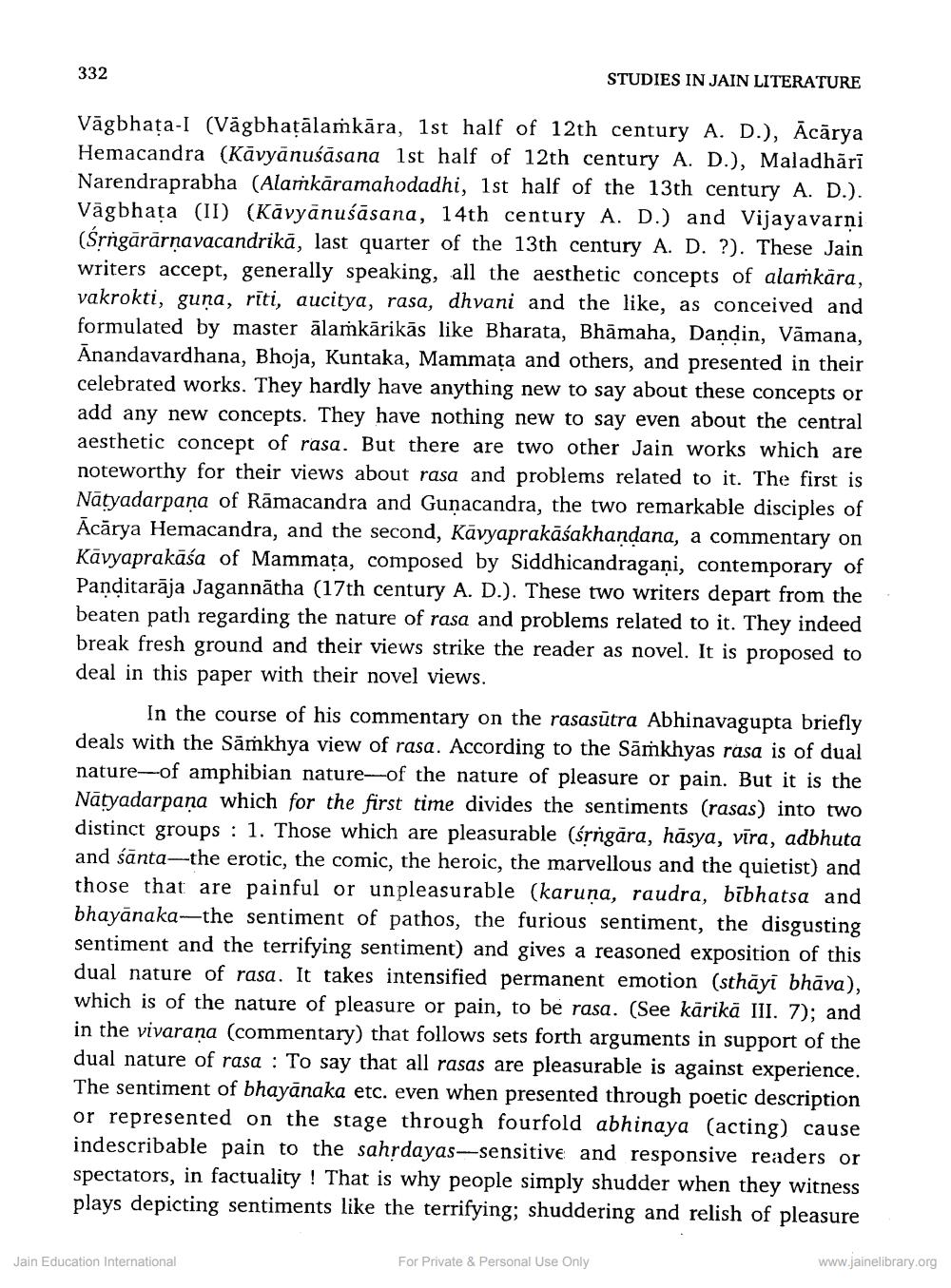________________ 332 STUDIES IN JAIN LITERATURE Vagbhata-I (Vagbhatalamkara, 1st half of 12th century A. D.), Acarya Hemacandra (Kavyanusasana lst half of 12th century A. D.), Maladhari Narendraprabha (Alamkaramahodadhi, 1st half of the 13th century A. D.). Vagbhata (II) (Kavyanusasana, 14th century A. D.) and Vijayavarni (Srngararnavacandrika, last quarter of the 13th century A. D. ?). These Jain writers accept, generally speaking, all the aesthetic concepts of alamkara, vakrokti, gura, riti, aucitya, rasa, dhvani and the like, as conceived and formulated by master alamkarikas like Bharata, Bhamaha, Dandin, Vamana, Anandavardhana, Bhoja, Kuntaka, Mammata and others, and presented in their celebrated works. They hardly have anything new to say about these concepts or add any new concepts. They have nothing new to say even about the central aesthetic concept of rasa. But there are two other Jain works which are noteworthy for their views about rasa and problems related to it. The first is Natyadarpana of Ramacandra and Gunacandra, the two remarkable disciples of Acarya Hemacandra, and the second, Kavyaprakasakhandana, a commentary on Kavyaprakasa of Mammata, composed by Siddhicandragani, contemporary of Panditaraja Jagannatha (17th century A. D.). These two writers depart from the beaten path regarding the nature of rasa and problems related to it. They indeed break fresh ground and their views strike the reader as novel. It is proposed to deal in this paper with their novel views. In the course of his commentary on the rasasutra Abhinavagupta briefly deals with the Samkhya view of rasa. According to the Samkhyas rasa is of dual nature--of amphibian nature-of the nature of pleasure or pain. But it is the Natyadarpana which for the first time divides the sentiments (rasas) into two distinct groups : 1. Those which are pleasurable (srngara, hasya, vira, adbhuta and santa--the erotic, the comic, the heroic, the marvellous and the quietist) and those that are painful or unpleasurable (karuna, raudra, bibhatsa and bhayanaka--the sentiment of pathos, the furious sentiment, the disgusting sentiment and the terrifying sentiment) and gives a reasoned exposition of this dual nature of rasa. It takes intensified permanent emotion (sthayi bhava), which is of the nature of pleasure or pain, to be rasa. (See karika III. 7); and in the vivarana (commentary) that follows sets forth arguments in support of the dual nature of rasa : To say that all rasas are pleasurable is against experience. The sentiment of bhayanaka etc. even when presented through poetic description or represented on the stage through fourfold abhinaya (acting) cause indescribable pain to the sahrdayas-sensitive and responsive readers or spectators, in factuality ! That is why people simply shudder when they witness plays depicting sentiments like the terrifying; shuddering and relish of pleasure For Private & Personal Use Only Jain Education International www.jainelibrary.org




